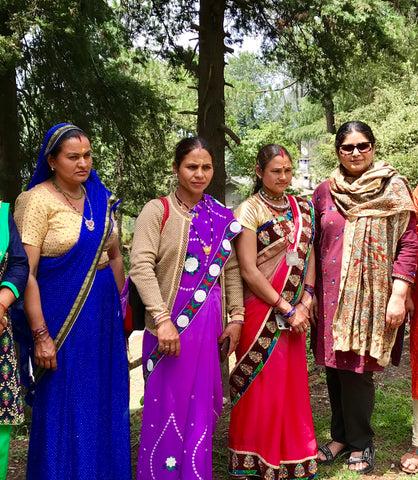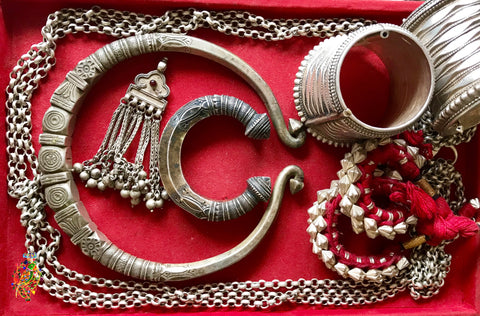I recently had a chance to visit Ranikhet, which literally means ‘Queen’s Land’. It’s an idyllic hamlet nestled in the Kumaon Himalayas. The Himalayan snow peaks are visible from all over Ranikhet, majestic hills covered with lush green forests.
The breeze laden with the pine fragrance adds to the charm. It’s the headquarter of the Kumaon regiment, so very clean and sparsely populated. Life in hills is very difficult especially for women. We should all salute their spirit. Life moves at a slow pace.
Being a jewellery lover, a visit to any place is incomplete without a sneak peak into the local designs and customs. I befriended a local girl and took a visit to the market and local jewellers. I visited some local villages and met local women. I realised that there are now a very few people working with their hands to create those art pieces.
Even the local jewelers said that they had lost the keys to the showcases displaying traditional pahadi jewellery! They refused to sell whatever was left! Most of it is only left as heirlooms with the village women.
Checkout Kumaoni Chupki here, created by the artisans of Kumaon, and comes straight from the lap of the Himalayas.

Nathuli (big nose ring worn by married women), guloband (choker), hansli, pahunchi (worn on the wrist), zhavar (anklet), karnful (flower earrings), charyo (mangalsutra worn by married women) are a few pieces of jewellery worn by pahadi Kumaoni women. Pichona is a beautiful piece of garment worn by married women.
But most perceivable difference between then and now is the amount of jewellery worn, which has dramatically decreased over time.
The contemporary designs are luxe and precious but lack charm and elegance found in traditional designs.
Lets revive the traditional pahadi jewellery by showing its lustre to the world.
Kumaoni Jewellery Motifs

Glimpses of Pahadi Jewellery











